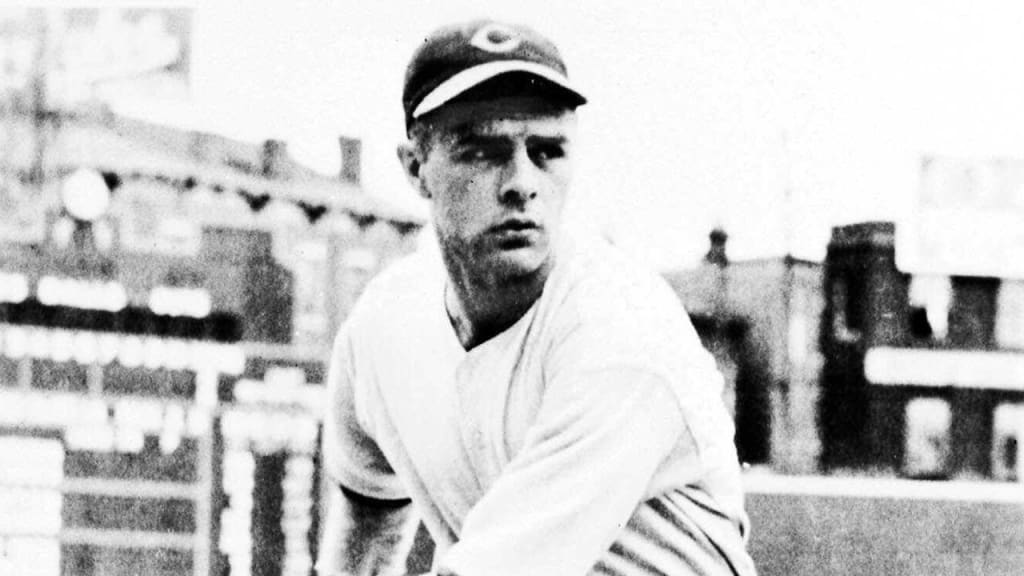There are some MLB records that will forever stand the test of time. Joe DiMaggio’s 56-game hit streak? Likely never going to be touched. Cal Ripken Jr.’s streak of 2,632 straight games played? Keep dreaming. Rickey Henderson’s 1,406 career steals? Don’t hold your breath.
While all those feats are impressive, there’s one that might stand above the rest -- and it’s from a pitcher who missed two years due to military service and worked at a brewery in his retirement.
On June 11, 1938, Cincinnati’s Johnny Vander Meer dominated the Boston Braves (then called the Bees), scattering three walks over nine innings for the 106th no-hitter in AL/NL history. Four days later, he recorded the 107th when he held the Brooklyn Dodgers hitless in a 6-0 Cincinnati win, becoming the first pitcher in AL/NL history to toss a no-hitter in consecutive starts, a feat that still stands -- and will likely never be broken.

Who was Johnny Vander Meer?
A native of Midland Park, N.J., Vander Meer was born on Nov. 2, 1914, and, by all accounts, was immediately drawn to baseball. His first foray into the sport came on a team in Midland Park called the Obadiah 9, which was named after the Old Testament prophet and consisted of boys from the local Dutch Reformed Church. After missing the start of high school while recovering from a near-fatal case of Peritonitis, Vander Meer took a job as an apprentice engraver at the factory where his father worked while continuing to play baseball.
While Vander Meer was a solid player (he had a record of 14-1 on the mound for the Midland Rangers, the local semi-pro team), he failed to attract the attention of any scouts. That said, he finally got the break he needed when National League officials picked him to play a “typical American boy” in a film to promote baseball. As a part of the filming, Vander Meer went to Florida, where he met Dodgers pitcher Joe Shaute, who urged Brooklyn to sign Vander Meer.
In 1933, the Dodgers eventually relented and signed a 19-year-old Vander Meer, promptly sending him to their Minor League team in Dayton. A year later, he was traded to the Scranton Miners (Boston’s Minor League team), where he pitched for two seasons. While Vander Meer had the stuff of a Major Leaguer, he struggled with his command, so much so that Reds business manager Larry MacPhail saw him pitch in 1935 and quipped that Vander Meer “walked everybody in the park but the ushers.”
Even with those struggles, the Reds paid the Dodgers $10,000 for Vander Meer, and he spent the 1936 season with Cincinnati Minor League affiliates Nashville and Durham. His 30-game stint with Durham ended up turning his career around, as Durham manager and catcher Johnny Gooch began to help Vander Meer work through his wildness, which almost always occurred as soon as a runner reached first base.
In 1937, Vander Meer made his Major League debut, going 3-5 with a 3.84 ERA in 84 1/3 innings with the Reds while shuffling between the Majors and Triple-A.
Prior to the start of the 1938 season, the Reds replaced manager Charlie Dressen (with whom Vander Meer didn’t get along) with Bill McKechnie, who was famously known as a player’s coach. In Spring Training, McKechnie worked with pitching coach Hank Gowdy and future Hall of Famer Lefty Grove to overhaul Vander Meer’s pitching motion from half side-arm to fully overhand -- a change that set him up for an historic season.
How the no-hitters happened
Coming into Vander Meer’s start against Boston, he was 5-2 on the year with a 3.06 ERA and 52 strikeouts. Vander Meer was in control from the start, as he retired the first nine batters before allowing a leadoff walk to Gene Moore in the top of the fourth inning. The no-hitter was nearly broken up later in the fourth when Vince DiMaggio lined a shot off Vander Meer’s glove that deflected to third baseman Lew Riggs, who threw out DiMaggio. After Vander Meer allowed two walks in the fifth inning, he cruised the rest of the way for the no-hitter.
Four days later, Vander Meer made history on a night that was already historic, as the Reds’ matchup against the Dodgers at Ebbets Field was the first night game to be played in the metropolitan New York City area, with the lights coming on at 8:35 p.m. There were 38,748 people in attendance, with an additional 10,000 people being turned away by the fire department. Fans who were able to make it were treated to pre-game celebrations that included fireworks, a band, an appearance from Babe Ruth and Olympian Jesse Owens racing against players from both teams.
Vander Meer shut the celebration down almost immediately, as he once again put together a hitless performance on the mound. Still, the no-hitter wasn’t without drama, as the Dodgers had a steady flow of baserunners (Vander Meer walked eight in the game) and even managed to load the bases in the ninth before Vander Meer ended the game with a groundout and strikeout.
Vander Meer became the ninth pitcher in AL/NL history to throw two no-hitters in their career. After the game, he told the writers on hand that he was going fishing the next day to celebrate.
What happened to Vander Meer afterwards?
Vander Meer became a household name after the second no-hitter, and in turn received a salary bump, endorsement deals and was named the honorary mayor of Tampa, Fla., where the Reds played their Spring Training games.
In his next start, with Young looking on, Vander Meer didn’t allow a hit for the first 3 1/3 innings, which brought his string of hitless innings to 21 1/3. A month after his two no-hitters, Vander Meer started in the All-Star Game, pitching three scoreless innings. He finished the year 15-10 with a 3.12 ERA, 125 strikeouts and 103 walks, and was named the Sporting News’ Major League player of the Year.
After struggling through arm troubles in 1939 (5-9, 4.67 ERA) and a mid-season Minor League demotion in 1940 (3-1, 3.75 ERA in 48 innings), Vander Meer found his groove in 1941, as he led the National League with 202 strikeouts before leading all of baseball in strikeouts in 1942 (186) and 1943 (174). In total, he went 49-41 with a 2.71 ERA in 759 1/3 innings between 1941-1943.
After spending two years serving in the Navy, Vander Meer returned to baseball in 1946, spending four years with the Reds before joining the Cubs in 1950 and throwing three innings for Cleveland in 1951. In 1952, he threw a no-hitter for the Tulsa Oilers in the Texas League.
After Vander Meer retired from playing, he was a Minor League manager for the Reds for 10 seasons before retiring from baseball fully in 1962. After retirement, Vander Meer worked for Schlitz Brewing Co. A member of the inaugural class of the Reds’ Hall of Fame, Vander Meer died on Oct. 6, 1997. He was 82.
Will anyone ever break Vander Meer’s record?
While some pitchers have had solid no-hitter follow-ups in the past, no one’s been able to string together 18 straight hitless innings. It’s hard enough to throw one no-hitter (there have only been 298 non-combination no-hitters); it’s nearly impossible to throw multiple no-hitters (there have only been 35 pitchers who have done so).
Although Vander Meer didn’t have the sustained success of some of his contemporaries, he reached a height no one could have foreseen -- one that will likely keep his name in the history books forever.
